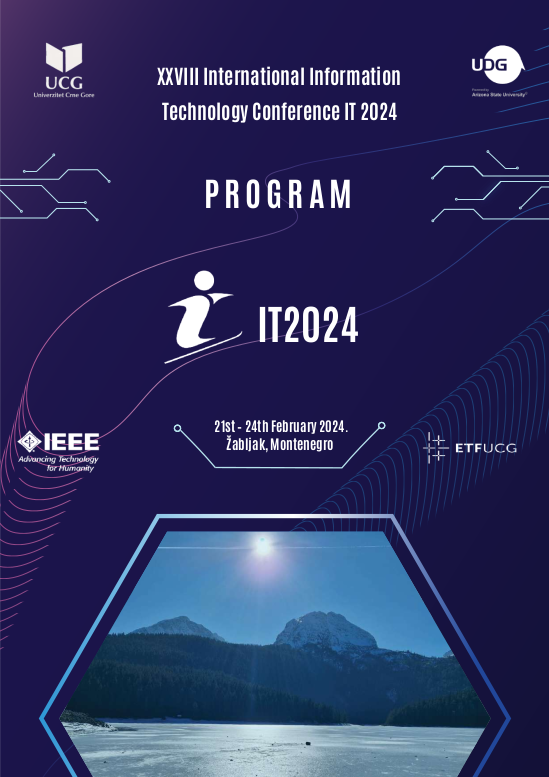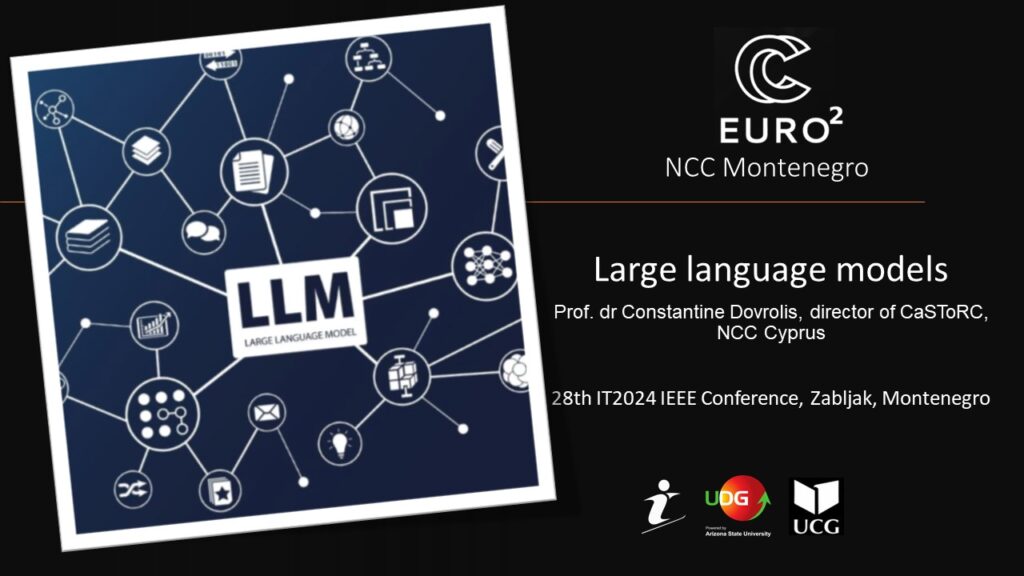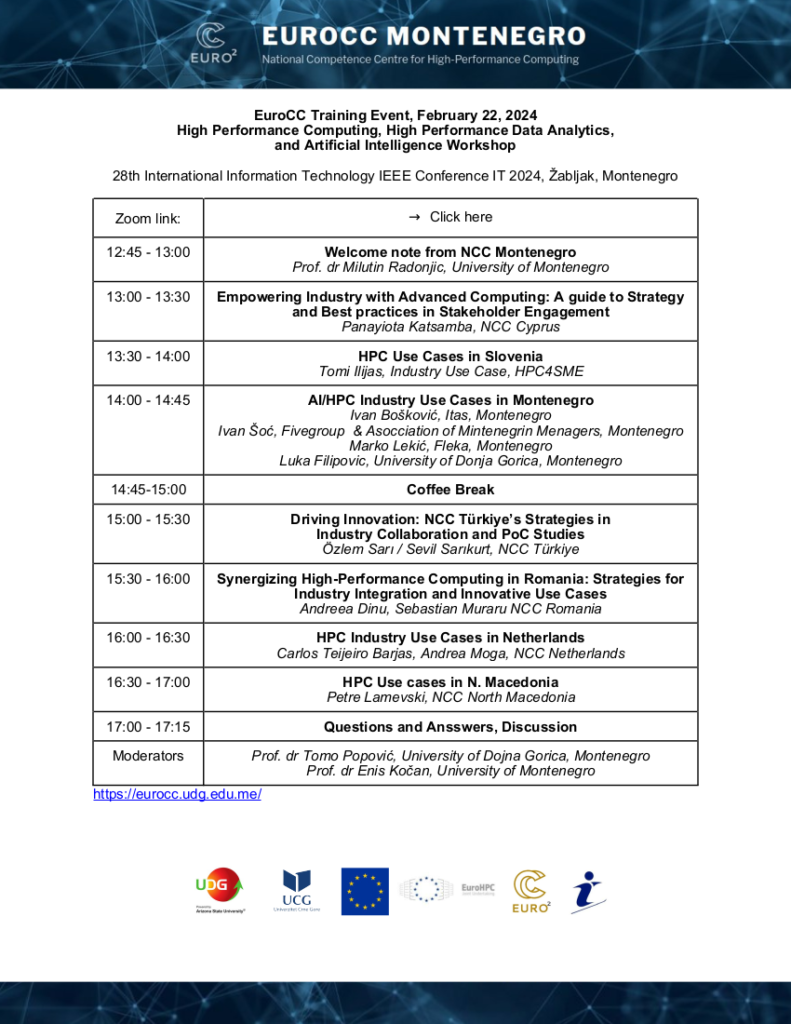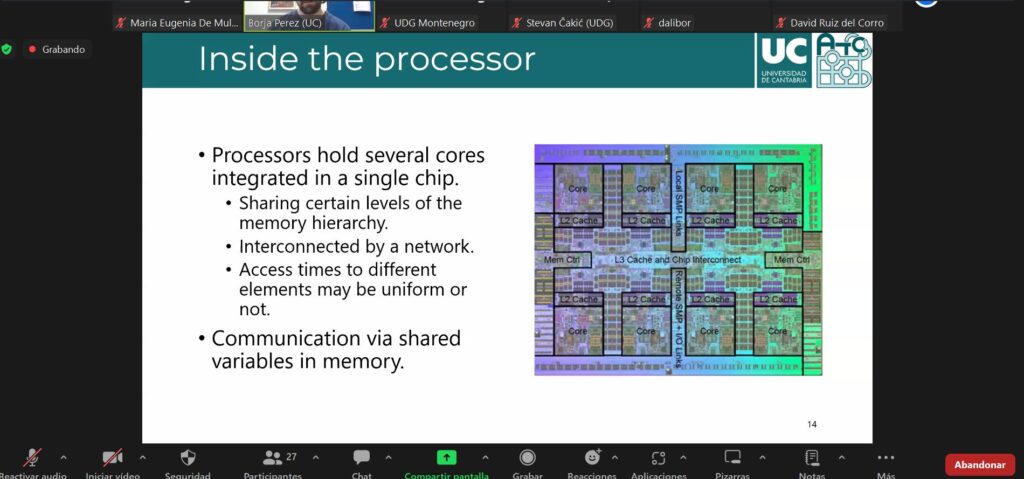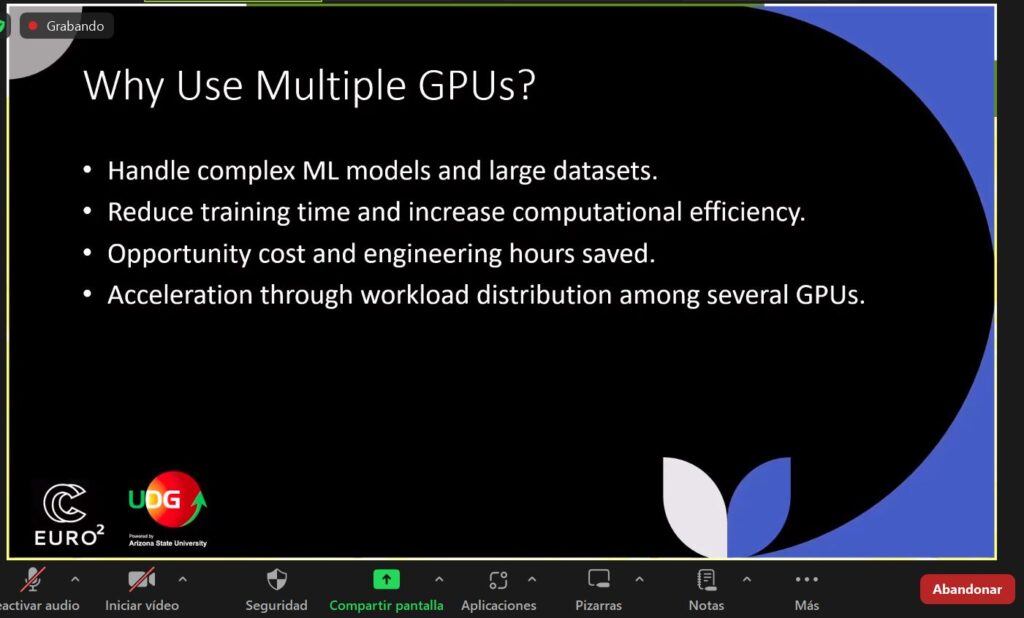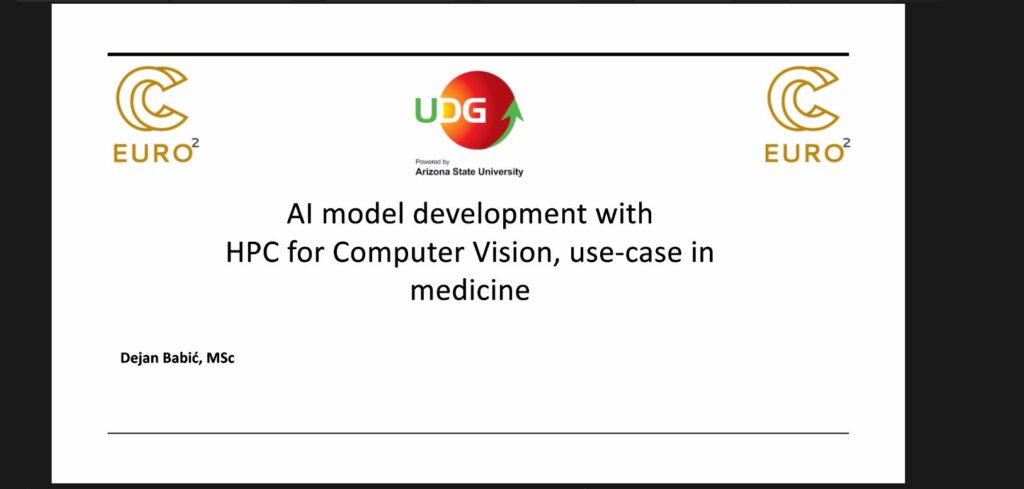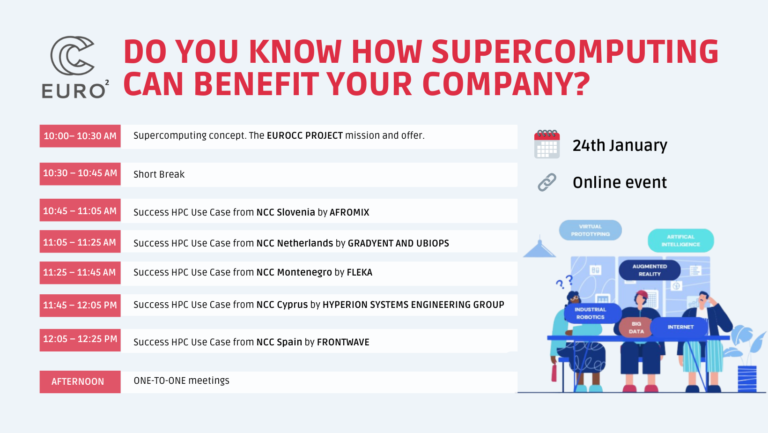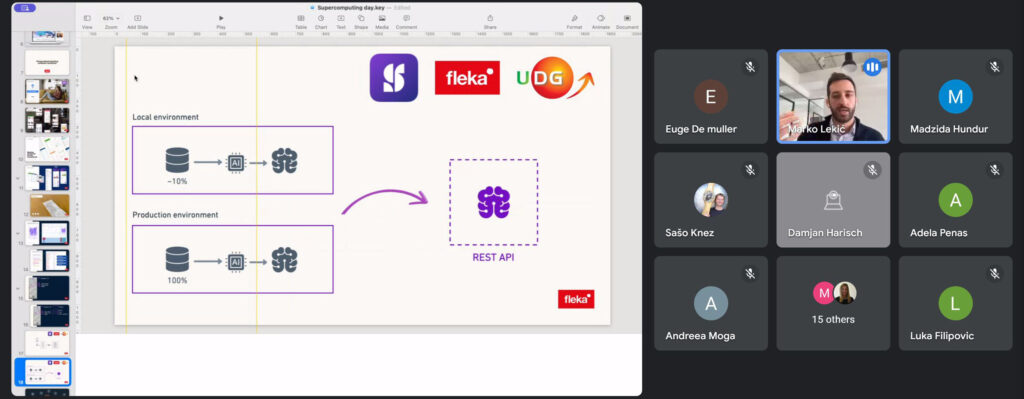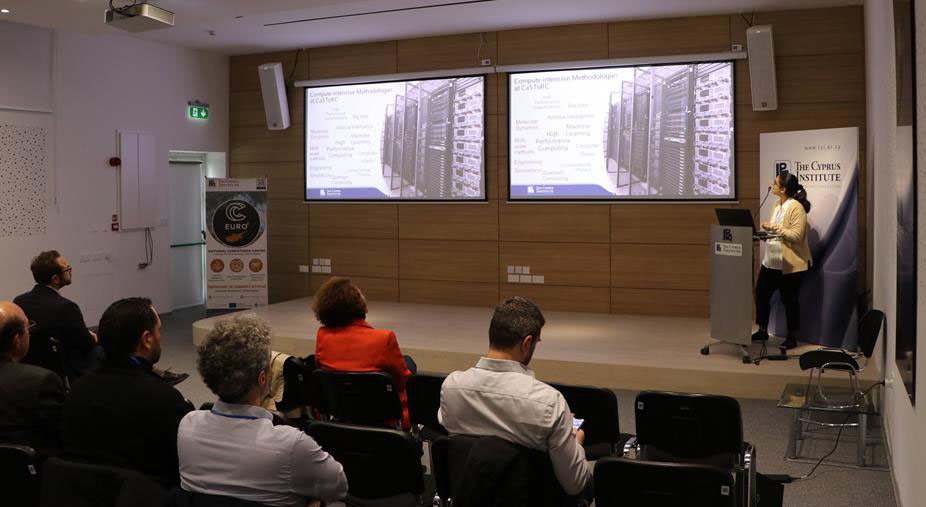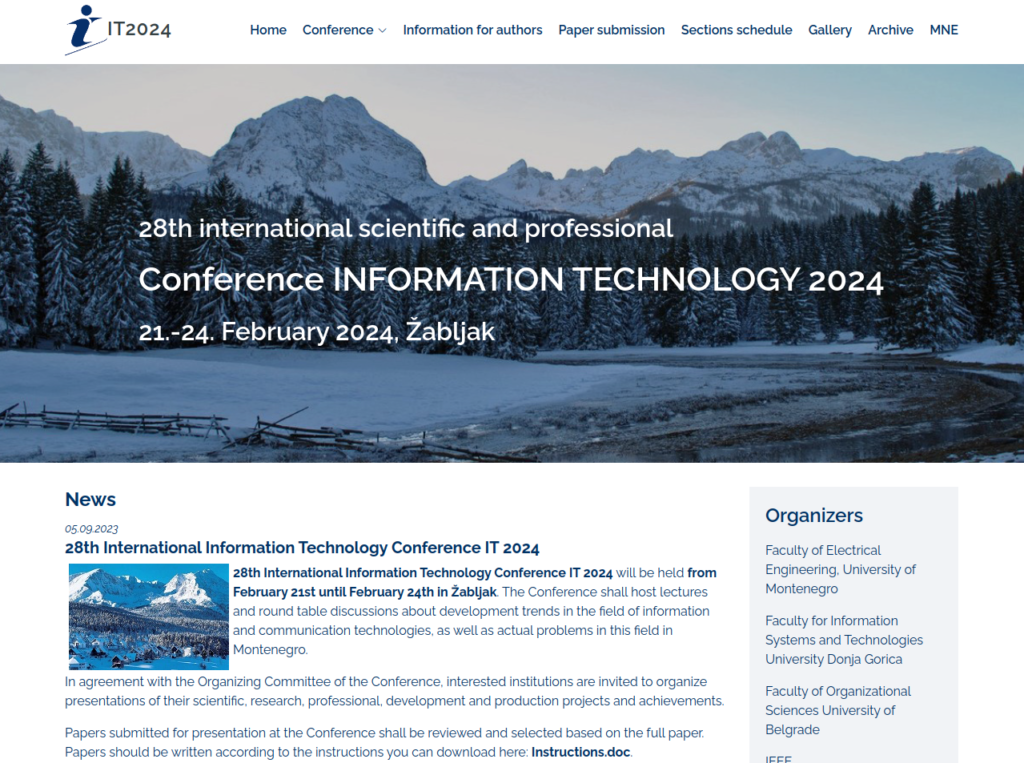We are pleased to inform you that the Program of the 28th IT Conference and the schedule of sections are posted on the site within the links “Conference program” and “Sections schedule”. You can access it on the conference’s website.
We would like to inform you that you can follow the work of the Conference via a videoconference link. Authors of papers will be able to present their papers using the ZOOM video conferencing system. Access links are posted on the Conference website, within the links “Section schedule” and “Conference program”. More detailed information is published on the website or you can get it from the technical secretary at it@ucg.ac.me.
For a user to use the ZOOM video conferencing system, the computer must have:
- standard web browser,
- webcam and headphones with microphone and
- Internet connection


